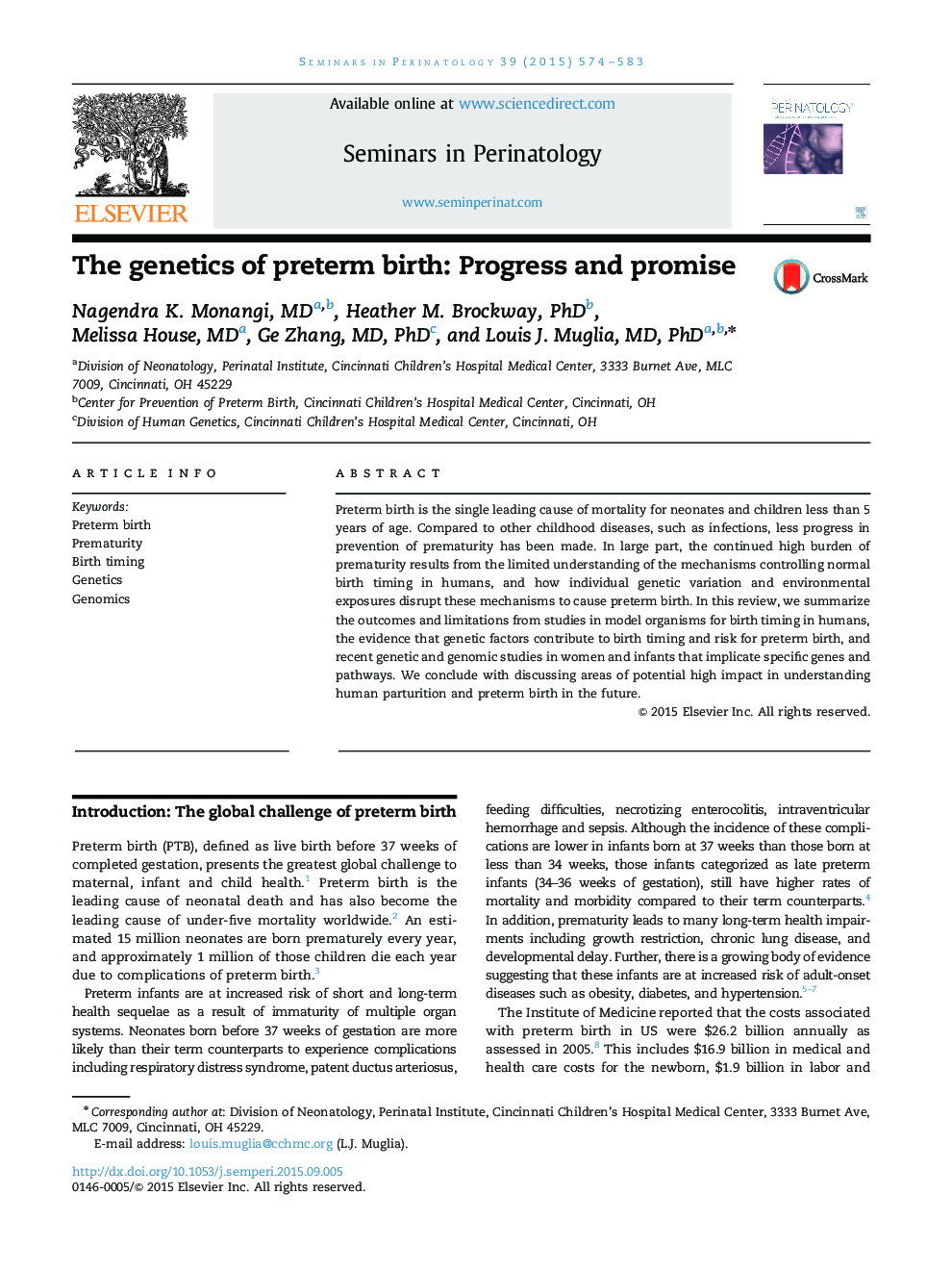| Article ID | Journal | Published Year | Pages | File Type |
|---|---|---|---|---|
| 3836139 | Seminars in Perinatology | 2015 | 10 Pages |
Preterm birth is the single leading cause of mortality for neonates and children less than 5 years of age. Compared to other childhood diseases, such as infections, less progress in prevention of prematurity has been made. In large part, the continued high burden of prematurity results from the limited understanding of the mechanisms controlling normal birth timing in humans, and how individual genetic variation and environmental exposures disrupt these mechanisms to cause preterm birth. In this review, we summarize the outcomes and limitations from studies in model organisms for birth timing in humans, the evidence that genetic factors contribute to birth timing and risk for preterm birth, and recent genetic and genomic studies in women and infants that implicate specific genes and pathways. We conclude with discussing areas of potential high impact in understanding human parturition and preterm birth in the future.
